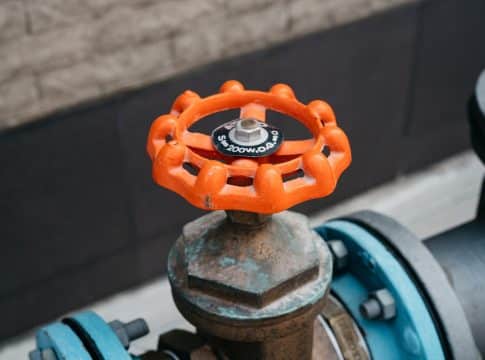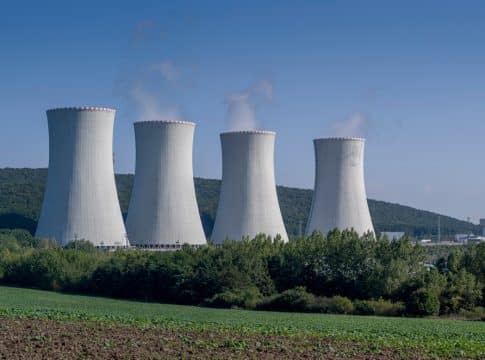EU Methane Regulation Sends a Strong Signal to US Natural Gas Suppliers
The European Union’s new Methane Regulation is making waves in the global energy market, especially in the U.S. liquefied natural gas (LNG) sector. The regulation aims to curb methane emissions from imported fuels, marking a significant step toward reaching net zero goals.
Methane, the second-largest contributor to global warming after carbon dioxide, is a potent greenhouse gas. The regulation sets a clear signal that suppliers, particularly those in the U.S., must improve tracking and control of methane emissions.
The Regulation’s Impact on the US Natural Gas Sector
The EU Methane Regulation sets a long-term framework with the key compliance period beginning in 2027. However, reporting requirements will start earlier, in May 2025, which will establish an emissions baseline. These initial reports will help lay the foundation for future compliance efforts.
Cheniere Energy Inc., the top U.S. LNG exporter, sees this regulation as a wake-up call for the industry to sharpen its focus on emissions. Robert Fee, Cheniere’s vice president of international affairs and climate, highlighted that the company has already been working on methane measurement and reporting for over 6 years. This head start positions Cheniere to navigate the new regulations more smoothly than some of its peers. Fee emphasized,
“Today and into the future, that’s going to be in a world where there’s an increasing focus on climate-related issues, and certainly through 2030 industry needs to take action to measure and mitigate methane emissions to near zero.”
Rather than imposing immediate and stringent penalties, the regulation gives companies time to adapt. They are expected to start by submitting information on existing supply deals and progressively incorporate these requirements into new contracts.
This phased approach has alleviated fears of market disruptions. Fee explained that despite the new rules, the EU still views U.S. LNG as a critical energy supply, especially following the loss of Russian pipeline gas 3 years ago.
In terms of natural gas demand projection, S&P Global Commodity Insights estimates show that it will grow to over 70% by 2050 under a base case scenario, but it could drop under the green energy transition scenario.
Challenges for US LNG Suppliers
The new regulation sends a clear message. Yet, there are still uncertainties about its exact implementation, especially concerning how it applies to LNG importers. This has created a degree of uncertainty in supply contract negotiations.
The most significant challenge for U.S. exporters is the requirement to collect methane emissions data “at the level of the producer.” This poses a hurdle, as many companies in the U.S. gas supply chain lack direct access to emissions information from wellheads.
Ben Cahill, a director of energy markets at the University of Texas, also noted that U.S. gas producers often struggle to gather this information due to the complexity and vastness of the U.S. gas pipeline network.
EU Methane Push: Taking the Lead on Global Efforts
The EU’s new regulation aligns with the Global Methane Pledge, a commitment made by the U.S. and over 100 other countries in 2021 to reduce global methane emissions by 30% from 2020 levels by 2030. European authorities aim to establish the EU as a global leader in methane mitigation by pushing for stringent mitigation measures.
Starting in 2027, LNG importers will have to demonstrate that the supplies they bring into the EU meet methane emissions standards equivalent to those in the EU.
By 2030, the region will have a methane emissions intensity standard that all imported fuels must meet. The regulation will also align with the Oil and Gas Methane Partnership 2.0 (OGMP 2.0), a reporting framework developed by the United Nations Environment Program. Cheniere Energy joined the OGMP 2.0 initiative in 2022, with Fee describing it as the “best measurement framework” for the industry.
Despite the clear direction set by the EU Methane Regulation, several details remain unresolved. For instance, importers must start reporting to a “competent authority” in each member state by May 2025. However, these authorities have not yet been established, and penalties for non-compliance are still unclear.
Another question mark is how the EU will handle regulatory exemptions for countries whose methane regulations are deemed equivalent to those in the EU. U.S. government officials may need to collaborate with their EU counterparts to ensure that the U.S. methane fee and the Environmental Protection Agency’s emissions regulations are recognized.
These U.S. regulations are among the strictest globally. Still, whether they will satisfy the EU’s new standards remains to be seen. Analysts believe that this uncertainty has led to a temporary pause in long-term supply contract negotiations.
A Growing LNG Market Amid Climate Regulations
Despite the challenges posed by the EU’s methane regulations, the global demand for LNG is rising. The U.S. LNG export capacity, expected to exceed 13 billion cubic feet per day (Bcf/d) by the end of 2024, is set to double by the end of the decade as new export projects come online.
Chart from the EIA
For these U.S. LNG exporters, the EU’s stance on methane emissions could bring regulatory continuity. It is both a challenge and an opportunity.
READ MORE: U.S. Natural Gas Prices to Jump 44%: What’s Driving the Surge?
While there are compliance hurdles, the phased approach provides time for adaptation. Moreover, the EU’s continued reliance on U.S. LNG supplies, combined with global efforts to curb methane emissions, underscores the importance of U.S. participation in these regulatory frameworks.
The post EU Methane Regulation Sends a Strong Signal to US Natural Gas Suppliers appeared first on Carbon Credits.



